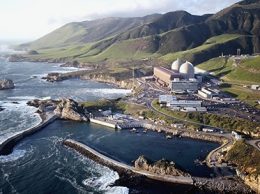Editorial: PG&E can make Diablo a model for nuclear safety
Just a little over a year ago, the Diablo Canyon nuclear plant near San Luis Obispo was on track to earn a 20-year extension of its operating license.
But the earthquake-tsunami-nuclear disaster last March at the Fukushima Daiichi power station in northern Japan changed the future trajectory of the nuclear industry around the world.
PG&E, owner of Diablo Canyon, has put the relicensing on hold. There is no timetable for restarting the process for the Nuclear Regulatory Commission to extend the plant’s operating license to 2045 from 2025. An NRC inspection last spring turned up more than a dozen problems with Diablo’s emergency procedures, including missing extension cords, fans that wouldn’t start and problems running a hose from an emergency water reservoir to the plant.
While many of these problems were easily addressed, we continue to believe that the Central Coast should not be shortchanged when it comes to safety and risk management at Diablo Canyon.
PG&E just agreed to paid $70 million in restitution to the city of San Bruno in the wake of a natural gas pipeline explosion in 2010 that killed six people, destroyed homes and caused significant damage to the city’s infrastructure.
In our view, PG&E has not done enough to make sure that the wonderful communities, world-class vineyards and valuable agricultural lands within 50 miles of Diablo Canyon would not suffer damage in an unlikely but plausible combination of events that would accompany an earthquake, tsunami and power blackout. Complicating things is the fact that thousands of people who live within the 50-mile evacuation radius are not customers of PG&E, because they live outside its service area.
Edwin Lyman, a nuclear expert who contributed to a recent report on the future of nuclear power for The Economist, thinks PG&E and other plant operators have not done enough to put equipment into place that could survive an event that lies beyond the “design basis” of the plant. He also thinks that PG&E has not been imaginative enough in planning for scenarios where both reactors at the plant would be simultaneously knocked out. For agriculture the stakes are extremely high because as Lyman said, “a little radiation goes a long way” in damaging a region’s reputation as well as its food supply.
The lesson of Fukushima Daiichi should not be that nuclear power is too risky to be part of our energy mix. Diablo Canyon has a solid operating history and efficiently provides a big chunk of base load power for the entire PG&E system.
This pause in relicensing should be a chance for PG&E to make real improvements in safety systems, to re-examine related issues such as how it stores spent fuel rods at the plant, and to shore up its ability to manage a low-probability-but-high-risk event.










